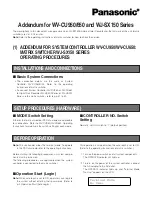
4
4
8
8
By default, Spanning Tree is
Disabled
. If
Enabled
, the Switch will
listen for BPDU packets and its accompanying Hello packet. BPDU
packets are sent even if a BPDU packet was not received. Therefore,
each link between bridges is sensitive to the status of the link.
Ultimately this difference results in faster detection of failed links, and
thus faster topology adjustment. A draw-back of 802.1D is this
absence of immediate feedback from adjacent bridges.
After
Enabling
STP, setting the STP Global Setting includes the
following options:
Bridge Priority:
This value between 0 and 65535 specifies the
priority for forwarding packets: the lower the value, the higher the
priority. The default is 32768.
Bridge Max Age:
This value may be set to ensure that old
information does not endlessly circulate through redundant paths in
the network, preventing the effective propagation of the new
information. Set by the Root Bridge, this value will aid in determining
that the Switch has spanning tree configuration values consistent with
other devices on the bridged LAN. If the value ages out and a BPDU
has still not been received from the Root Bridge, the Switch will start
sending its own BPDU to all other switches for permission to become
the Root Bridge. If it turns out that the Switch has the lowest Bridge
Identifier, it will become the Root Bridge. A time interval may be
chosen between 6 and 40 seconds. The default value is 20.
Bridge Hello Time:
The user may set the time interval between
transmissions of configuration messages by the root device, thus
stating that the Switch is still functioning. The default is 2 seconds.
(Max Age has to have a value bigger than Hello Time)
Bridge Forward Delay:
This sets the maximum amount of time that
the root device will wait before changing states. The default is 15
seconds.
Summary of Contents for 48-Port 10/100Mbps Web-Smart Switch with 4-Port 10/100/1000Base-T and 2-Port Combo SFP...
Page 68: ......
















































